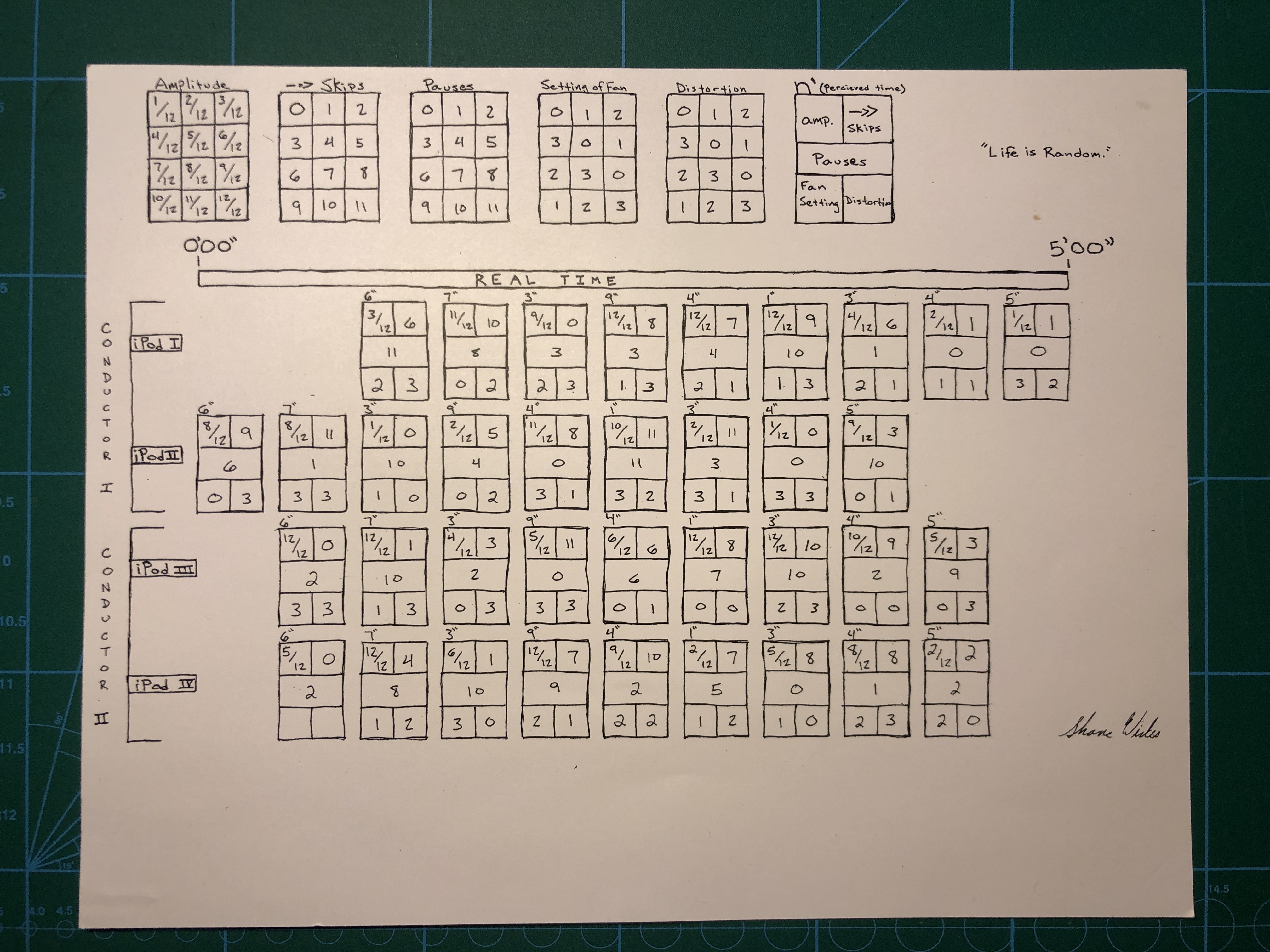
Composed at the University of Illinois, this piece was met with divided opinions among the composition faculty. It is a unique composition that involves the use of four iPods, controlled by four performers, with the randomness set in motion by pressing “shuffle songs” on the main menu. The concept of time is explored on both a macro and micro level, with the volume and distortion levels being adjusted for each event. The piece requires the collaboration of two conductors, two iPod controllers, and two assistants, with each performer given a set of events to carry out within the perceived time of the conductor. The performance is enhanced by the use of box fans and distortion, creating a dynamic and unpredictable soundscape.
Instructions and Performance Information
iPod: Four iPods are to be controlled by four performers. At the beginning of each iPod’s section, the performer is to press “shuffle songs” on the main menu of the iPod. This will set the random in motion for the rest of the piece.
Time: Time is used in two different ways within this piece. Real time is used on the macro level to contain the entire piece within its scope, while perceived time is realized and interpreted by the conductors event by event (on the micro level). The spaces in between the events are also in the conductor’s perceived time.
Amplitude: The amplitude is to be controlled on the iPod (the volume of the amp should be such that when the iPod’s volume is all the way up, it is fff, and when it is down it is ppp. Performers should mark the volume control so that they can adjust the amplitude appropriately for each event.
Box Fan: The box fans are to be set up directly in front of the amplifiers, blowing into them so that they “chop up” the sound waves as they are emitted from the speakers. The box fans should have three speeds and an off switch.
Distortion: The distortion levels are relative to each amplifier, but 0 is off and 3 is the amplifier’s highest level of distortion.
Performers and Assistants: This piece requires four performers which includes two conductors, two iPod controllers, and two assistants. The conductors start by cueing the performers at the times they feel appropriate relative to the score (it is important to note that other than the iPod that starts at 0′ 00″, the time in which the iPods are brought in is considered perceived time and thus do not need to match up with the Real timeline other than being within the frame of Real-time given).
The two iPod performers are given the number of events that they need to perform in each box, so it is up to them to carry these out within the perceived time of the conductor. In order to allow for a smooth performance of each box, the conductor should give steady cues by hand as to how much time the performer has (counting at a steady pace with one’s fingers is a good way to do this). The performers may skip ahead and pause the iPod at any rate they wish within each event’s time. Also, the number of pauses denotes the number of times you push the pause button to stop the sound, it does not include depressing the button to continue the sound.